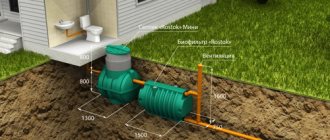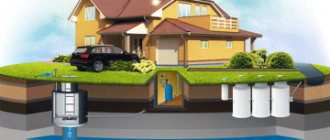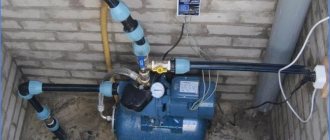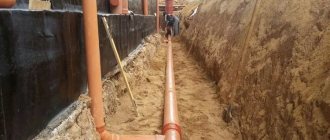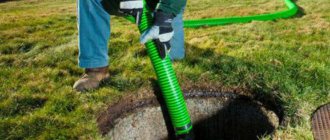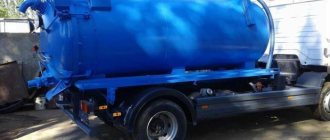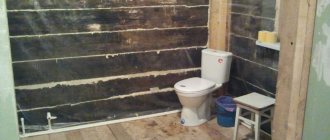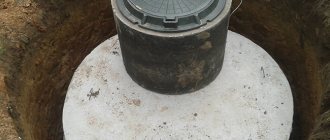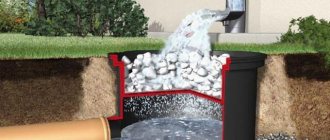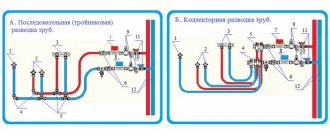New rules on the use of groundwater have been issued. Owners of private houses and summer residents became worried. After all, the so-called law on wells in a private home, which came into force in 2021, will entail new taxes and tighten the requirements.
Article 19.2 of the Law “On Subsoil” with the latest edition of 2019
Excerpt from the Law “On Subsoil”
As can be seen from Article 19.2, an ordinary summer resident or gardener should not worry. No one will force you to obtain a license for a well that you use for your own needs. Despite this, there are already reports of attempts at fraud and coercion to obtain fake “licenses”. Be careful not to fall for the tricks of scammers! The full text of the Law “On Subsoil” can be read on the ConsultantPlus website.
On the one hand, the subsoil belongs to the state. Drinking water is essentially a mineral, along with oil, gas, and coal. Its deposits and production sites are subject to state registration and control. Each well is entered into the state register and given a registration certificate.
Do you already have a well on your property or are you still thinking about the Pros and Cons?
Yes I think
On the other hand, why should a person who has developed a plot for which he has already paid a tax, invested his own funds in the construction of a private well in his country house, uses it occasionally and exclusively for personal purposes, pay more?
Control over water use is objectively necessary because it has a close relationship with the environmental well-being of life and the epidemiological situation.
Rules of law regulating the process of constructing water wells
The law on registration of water wells came into force on January 1, 2019.
Everyone involved in water extraction is divided into three categories:
- Legal entities conducting production and economic activities, extracting artesian water.
- Gardening partnerships, summer residents using wells for personal non-commercial purposes.
- Individuals using underground sources to meet their own needs. This group is limited by a number of regulatory conditions.
The procedure for water extraction has been approved by law. If you plan to drill an artesian well, you will definitely need a license. If the well was built for private needs at a dacha and is located at the depth of the first aquifer from the surface of the earth (on sand), permission is not required.
Reliable prospecting method by exploratory drilling
The most reliable way to avoid annoying miscalculations is to search for official information about the hydrogeological situation of the site. You can obtain data from a local drilling organization or from a meteorological service that has all the information about the geological and climatic specifics of the region.
To carry out independent exploration, you can use a manual method that does not require financial costs. Before starting drilling operations, it is necessary to prepare the required equipment: a hand drill, a shovel, and also take care of the storage location for the soil raised to the surface.
This method is suitable for soft soils that can be drilled with a hand drill. For denser rocks, you will have to call drillers and use more serious equipment.
Advantages of exploration drilling:
- 100% result of searching and determining the depth of groundwater;
- the ability to assess groundwater;
- the ability to accurately calculate the cost of drilling.
An exploration well is usually installed in the location chosen for water intake. Those. No one will conduct exploration specifically for a private owner - it is expensive, because you will have to pay for each drilled meter at the usual rate, and it is pointless.
If there is no water in a well at a depth acceptable for operation, it is classified as an exploration well and is simply backfilled with soil extracted during drilling. No one else will drill anything in this area - it is useless. If the well has discovered an aquifer, they simply develop a source and build a water supply system based on the water intake.
During the process of exploratory drilling, the depth of groundwater, the thickness of the aquifer and the presence of overlying horizons are determined
What is possible by law without registration and license?
The new Subsoil Law states (Article 19) that only water from the first aquifer sand formation can be used for personal purposes. It is not used for industrial purposes or for the needs of central water supply. Only the waters of the second and third layers are on the balance sheet (accounting) of the state.
The new rules for the use of groundwater state that land users and landowners within their own area have the right to:
- Use common minerals, including water, for household needs.
- Consume groundwater in a volume of no more than 100 m3 per day.
- The depth of the drilled well or well should not exceed 30 meters.
From these admissions it follows that you can still use wells on your own plot of land in a personal subsidiary plot without registration, licensing and well tax.
The problem will be faced by owners of private wells, where groundwater, in principle, lies very deep. And even in the Moscow region there are areas where the aquiferous sand or limestone layer is located at a depth of 20 meters or more. Here you can’t do without a license at all.
Where to drill a well outside or inside the house?
Very often, especially before starting new construction, water well customers ask quite logical questions:
- Where to drill a well outside or inside the house?
- Is it possible to drill a well directly under the house?
At first glance, it may seem that this is a really great idea that will solve several problems at once: there is no need to install a water supply system and insulate it, to build a separate caisson... The well itself is reliably protected, since its head goes into the basement. In this article we will consider all the pros and cons of drilling a well inside and outside the house.
In addition to all these advantages, wells located in the house have a very significant drawback - they are difficult to maintain and almost impossible to flush if they become silted. In addition, there is a high risk of uneven settlement of the building or even its destruction due to washout of soil around the casing filter. The size of the resulting cavity can reach more than three meters in diameter. Its influence on the building depends immediately on many conditions, including such as the depth of the well, the density of the passable soil, the distance between the foundation walls, the load on the foundation, etc.
During the operation of a well, sometimes it becomes necessary to raise the pump, and this can only be done together with a hose or pipe through which water is supplied upward. It is extremely inconvenient to carry out such work indoors, especially if there is a polyethylene pipe leading to the pump, which has significantly less flexibility than a hose.
If a well under a house is drilled into limestone, then we are talking about its considerable depth, and therefore about a long and correspondingly heavy supply pipe. For sand wells drilled in the perimeter of a building, the main thing is not even the supply pipe and the difficulties of dismantling it, but the problems that may arise if it is necessary to flush it. It is necessary that easy access to the well is provided, otherwise special equipment will not be able to get to it.
As is obvious, on one side of the scale lies the cheaper option of installing a well under the house, and on the other is the inevitability of problems with its maintenance. And if such problems arise, then the matter will most likely end with the drilling of a new well outside the perimeter of the building. Analyzing the weight of all the pros and cons, it would be wiser to abandon the well under the house. However, the job of specialists is to warn; but the last word still remains with the customer...
Innovations in subsoil legislation
The law on water wells affects those gardening partnerships and peasant farms that have an artesian well with a water tower and water supply networks.
The law distinguishes between the concepts of commercial use of wells and wells for domestic needs.
You will have to legalize a well if:
- Water is used to produce goods.
- Alienation, transfer or sale of water to third parties is permitted.
Violators of these requirements will initially be warned, then issued an order requiring them to register their water-bearing well. If the owner ignores the requirements of the law, he will be required to eliminate the source at his own expense.
What to consider when drilling in a house
Before you start drilling a water well at home, you need to find water. There are many methods for searching for a source, which experienced workers resort to before installation. Otherwise, you can perform all the technical work, but there will be no water in the house!
These recommendations will tell you how to drill a well correctly:
- Plan the structure already at the stage of building a house before building the foundation. To do this, you can use the services of special services or advice from experienced people.
- To avoid any unclear situations with the contractor, mark this area on the relevant documentation.
- Drill a water well at a distance of at least 1 m from the foundation structure.
- The first time after installing the structure, it is recommended to intensively exploit the well in order to identify possible shortcomings in its installation.
- For the design, it is better to choose stainless or galvanized pipes. This allows you to extend the service life of parts.
Creating a well is a responsible and labor-intensive process. Not only the quantity of water entering the house, but also its quality depends on the quality of its implementation. It is impossible to complete all the work in one day!
Then the barrel is lined with metal pipes. Next, a smaller chisel is used, after which plastic pipes are installed, which are more reliable and durable. At the final stage, a pump is lowered into the well, capable of pumping out all the dirt to the surface. The appearance of a stream of visually clean water indicates the completion of pumping.
If an artesian well is chosen as the source, the pump for it should be powerful and silent. This will save you from unnecessary noise and the cost of purchasing additional equipment.
When choosing a pump, you should pay attention to:
- head height;
- consumption of cubic meters per minute.
It is not recommended to drill a well under:
- children's;
- living room;
- bedroom.
The described design can make a lot of noise and be a source of high humidity. This will not only cause damage to the interior of the rooms, but will also disturb the peace of the entire house. Also, during repairs, it is not always possible to deliver the necessary drilling equipment to a particular underground room.
For wells, a large number of caissons are produced that can protect the aquifer from freezing and the penetration of contaminants. It looks like a sealed container buried in the ground and fixed to the casing pipe.
Construction of the caisson begins after drilling the well. In this case, be sure to insulate the hatch after filling the sealed container with soil up to the roof. Next, we begin installing our own equipment. Savings on the caisson result in additional costs for the purchase of pipes and pumps that have failed ahead of schedule.
For greater reliability, special filters are installed on the pipes. The coarse filter manages to purify water from sand, gravel and other coarse inclusions.
Using filtering equipment, a technically pure liquid is obtained that does not spoil the heating elements of household appliances.
How is a water-bearing well registered?
Mandatory obtaining a license for an artesian well will be introduced in 2021. Until this time, you can register it voluntarily. Owners have this right.
And it is better to start the procedure for preparing the necessary documentation in advance. It is worth registering in advance because from 2021 you will have to pay a state fee. The preliminary amount will be 7,500 rubles.
Fines for illegal use of subsoil – up to a million rubles for legal entities. Therefore, you need to hurry up with the preparation of documentation.
Preparatory activities for drilling a water well
Initially, they determine where, in what specific place, to carry out excavation work in order to get into the water vein so that it does not deplete over time. From what depth and from what layer should we take water so that it is potable and not suitable only for domestic needs.
To do this, make a request to the regional Geological Information Fund. Employees of this service, based on the map indicating the location of the site, will provide the necessary geological information.
The law stipulates that well drilling can only be carried out by specialized organizations that have state accreditation and other permits.
Casing diameter
For the Moscow region, where the depth of aquiferous limestone ranges from 80 to 140 meters, the optimal option for casing a well is considered to be a steel column with a diameter of 159 mm with a plastic production pipe of 125 mm (internal diameter 111 mm).
The advantages of such a system: the ability to install a standard 4-inch pump, and most importantly, maintainability. When the pipe reaches the end of its service life, there is no need to drill the well again. It will be enough to install a pipe of smaller diameter inside the old “waste” pipe.
In other words, a wide diameter potentially doubles the life of the well!
How to obtain a license to use water from a well?
To obtain permission to drill a well, you need a package of documents, which includes:
- Technical passport of the established form.
- Conducting geophysical research.
- Sanitary and epidemiological conclusion.
- Water analysis (bacteriological, chemical, radiation).
It is necessary to make a preliminary calculation of water consumption and approve it with the Federal Water Resources Agency.
Rospotrebnadzor agrees on the suitability of the site for the stated purposes. There should be no polluting objects on the territory at a distance closer than 300 meters from the well.
To register a well you will need:
| For individuals | Identity document. |
| Title documents for the land plot (certificate of ownership or lease agreement). | |
| General plan of the site. | |
| Cadastral plan of the site. | |
| Situation plan with specified infrastructure facilities. | |
| For legal entities | Bank details of the organization. |
| Actual and legal address. | |
| Charter | |
| Certificate of registration with the tax authority. | |
| EGRUL Certificate. | |
| Documents about the founders. | |
| Certificate of absence of debts on taxes and fees. |
How do you assess the QUALITY of water in your well?
GoodBad
Other documents may also be needed. The registration procedure can take a long time, depending on the type of well, and survey work will be required. The drilling project will be agreed upon with regulatory authorities.
As a rule, specialized organizations are involved in the process that have a license, experience in conducting geological exploration and drilling work, and have a database of geological data on the area.
Specialists will undertake the preparation of permitting documentation. In addition, such organizations provide a guarantee of the quality, required volume of water from the well and the timing of use of the source.
The license for water use is issued by the Ministry of Natural Resources. It contains the following information:
- Owner information.
- Purposes of using the source.
- Grounds for granting a license.
- Estimated volume of water consumption.
- Location (geographical coordinates).
- Geological information from the federal register.
- Conditions for safe use.
- Description of the reconnaissance work procedure.
- Validity period of the issued document.
- Terms and conditions of payment.
Additions and changes to the terms of the license are made with the knowledge and agreement of the state register authorities and the user.
Adapter installation
Installing an adapter for connecting a submersible pump is not a complicated operation, but requires an electromechanical tool (drill, hammer drill) and special components: metal bits with the diameter of the adapter, pipes with a threaded groove about 2 m long for the installation adapter thread.
Although the pump is suspended from a sealed well cap, the adapter experiences the load of the water column in the pressure hose, it can withstand a weight of 500-600 kg, which cannot be said about the walls of the uPVC casing pipe, which experience additional soil pressure - this can cause a change in the geometry of the shell and the appearance of leaks in fitting fastening area. Therefore, the adapter is cut into the metal pipe of the column, installation is carried out as follows:
- Dig a hole around the casing and a ditch below the freezing depth of the soil from the well to the house with a depth of about 1.5 m.
- Use a grinder to cut off the top of the casing pipe. Usually it is buried underground and covered with an airtight lid, but this does not guarantee protection against groundwater entering the canal, so a small section of pipe is often left at the top.
- Prepare the electric pump for immersion by connecting a cable or pressure pipeline to it, which are tied together with the power cable with ties or insulating tape.
- A hole of the required diameter is drilled in the wall of the casing pipe using a metal crown, and one part of the adapter is inserted from inside the pipe. To do this, it is completely assembled, screwed onto the mounting pipe and lowered into the well, illuminated with a flashlight.
Downhole adapter
- After inserting part of the adapter through the side hole of the casing pipe, it is clamped with an outer nut through the rubber gasket with an adjustable wrench, and the mating part together with the mounting pipe is removed from the well.
- Cut the HDPE pressure pipe from the electric pump to the required length, and install the second part of the adapter with a dovetail connection on the free end.
- Screw the mounting pipe to the mating part of the adapter and lower it together with the pressure pipelines and the electric pump into the well, fixing the dovetail connection with the part fixed to the casing.
- A sealed cap is installed over the well, a cable is tied to its inside, and the power cable of the electric pump is connected to the terminals of the junction box located in the side of the cap body.
- Through the adapter coupling, the HDPE water line entering the house is connected to the side of the adapter; upon completion of the work, the trench and hole are filled with raised soil.
Basic steps for connecting the adapter
